
A PLOT is one of the (9) thesis groups at Taubman College to recently complete final presentations (by recently I mean several months ago). Below is a look at some of the resulting work and investigations.
A PLOT brief:
As cities are strained, once familiar settings become anomalies or strangers to their original intentions. Material conglomerations acquire obscure and unfamiliar attributes, occupations and associations as the raw material of the city falls in and out of expected definitions, setting the stage for questionable legal, cultural and environmental interpretations. In a tangle of material culture and spatial implications speculation alone misses the unexpected push of reality. As an alternative, direct material manipulations and the actual items of production, collapse architectural interpretation with the city itself.
A two-fold definition, PLOT simultaneously collapses the keen focus on the physical and circumstantial attributes of explicit locations, and the weight of the scheme or narrative conjured up by the work. Predicated in making this research practice is a means to reveal, critique and alter the realities of our urban settings.
Tested first as an exhibit at the Civic Space gallery in Windsor, the PLOTTERS focus on specific plots of land in Detroit, exploring their material and atmospheric conditions as well as their immaterial circumstances (regulations, neglect, oddities). For the exhibit, Cross-Plotting: From Detroit to Windsor, material from selected plots were physically or conceptually lifted from the sites in Detroit, re-worked, and re-plotted in Windsor, exposing interests, realities and circumstantial agents. Yearlong pursuits continued the developing research practices; responsive to the peculiarities of the city and resonating with the present context. These endeavors were supported by allies in the effort. PLOT collaborates closely with the inspiring collective: Broken City Lab of Windsor through shared workshops and pursuits, as well as the nimble and dedicated Creative Rights legal team and their guidance in helping to decipher the stakes in the settings.
All the resultants are material based, real and of their invested circumstances. Distinct to the respective plots, and as a collective, PLOT is a practice and means by which to test and reveal the city.
Written by Catie Newell (Thesis Advisor)
Emily Kutil
Creatures of Fierce and Ordinary Reality: A Zoo for Belle Isle

Concealed behind fences and isolated from their surroundings by freeways, golf courses, and parks, zoos make spaces in cities for humans to explore their fascinations with other animals in peculiar and fantastical ways. Zoos use architecture to help them act as spatial mediators, dealing simultaneously in the space of collective fantasy and in the particularities of contact between human and nonhuman life. Architecture shapes the images of the natural world that zoos are able to create, both as a frame for organizing relationships and as a container for the production of microcosms.
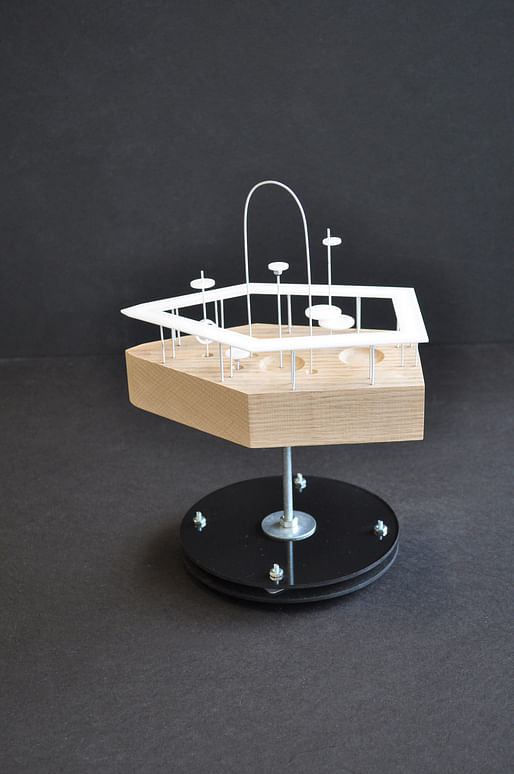
For nearly twenty years, the Belle Isle Zoo passed through a difficult period in which its spaces of contact seemed fixed, inevitable, and tremendously boring. Humans and animals were made to stare at each other across long distances, never allowed to stray from their respective enclosures. Attendance to the Zoo dwindled. Then, in a stroke of brilliance, the idea of captivity was abandoned altogether. The captive animals were sent away, and the Zoo experienced a renaissance. Visitors poured through the open gates and holes in the fences, eager to see the Zoo’s enclosures—which had become all the more enticing for their emptiness. The Zoo was suddenly able to foster a thrilling, uneasy relationship between humans and the life forms they encountered there.

Renovations to the Zoo since its reinvention have taken this unease into account, building into each exhibit degrees of ambiguity that had been previously unimaginable. A new architecture of oscillating representations has taken the place of the old, static panoramas: as soon as one illusion is staged, another undermines it or takes its place. Real and imagined spaces are allowed to coexist, to blur and conflict. The unresolved fantasies help visitors to wonder about the things they do and don’t understand about humans and other living things.
Andrew Wolking
Saturated Landscapes
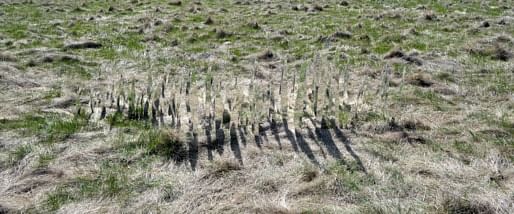
The expanding landscapes of Detroit’s abandoned and closed schools offer unique opportunities to expose latent site conditions through the exploration of new design methodologies. Working within the framework of Rose Elementary School, an abandoned school on Detroit’s eastside, the project seeks to draw from the dulling colorization of the site and its surrounding context. Using color as a design mechanism to drive the formal and aesthetic decisions of the work, “Saturated Landscapes” pushes the role of color to the forefront of the design process. No longer is color used simply as a superficial application added at the end of the work, but it becomes a driver for design decisions exposing a practice for working through color, not just with it.

Through intense site documentation using the flexibility of film as the tool, Rose is extensively photographed capturing the fading colors as the school slips away and its surrounding ground pushes outwards.

Color’s inherent ability to obstruct or veil materiality, boundaries, and edge conditions is explored in the film strips through a post processing technique of drawing the major colors through the images creating unfamiliar landscapes in which to view the playground and surrounding neighborhood of Rose Elementary. The site is able to undergo this transformation by operating through the lens of color distorting the current conditions.

The altered film images inform a site installed installation constructed of mirrored surfaces. The fragmented and irregular surfaces rooted in the ground blur edge conditions by pulling ground vertically and capture the ephemerality of site based light and color. The dulling colors of the site are displaced onto the reflected surfaces acting as a comment on the current lack of color by removing color from its contextual positions allowing viewers to visually access isolated immaterial moments of continually changing site color conditions.
Grant Weaver
Nascent Ecologies:
finding an architectural agency within post-industrial sites of decline

“…as we unleash living forces into our created machines, we lose control of them. They acquire wildness and some of the surprises that the wild entails. This, then, is the dilemma all gods must accept: that they can no longer be completely sovereign over their finest creations”.1 Once our finest creation, Fordist notions of space planning and industrial processes have physically transformed our modern landscape, leaving altered ecologies in their wake. These sites exist as a fourth nature, a new landscape synthetically altered by contaminants released into the soil. How can architecture move beyond conventionally accepted remediation techniques and respond to these altered geologic states? Framed through a broadened ecological understanding, how might architecture respond to the nascent attributes of the post-industrial landscape?

The former Continental Aluminum factory on the east side of Detroit has been taken on as a test bed for this research. Officially abandoned in the 1990s, it was home to aluminum scrapping and smelting processes, releasing pollutants into the air and ground. Attention is directed towards the ground condition, looking to the soil as a geologic record, a litmus test of previous occupations and industrial processes.

Through extraction of a core sample, the once native soil was found to be completely artificial. The chemical makeup physically altered through industrial waste and traces of chemical pollutants, transforming the landscape into a new synthetic ecology, a fourth nature.

This project posits itself amidst this synthetically altered nature, advocating for the architectural construct to design within and for this new natural state. As design research, this thesis investigates the unseen and unsensed attributes of post-industrial landscapes through the development of systems specifically responsive to chemically altered ground conditions.Developed and deployed as a full scale on-site installation, this thesis positions itself as a commentary on our ‘natural’ state of existence. If “artificiality is our destiny”2 how might we design for it?
John Guinn
Synesthetic Architectures:
a mobile laboratory
The project is conceived of as a mobile laboratory, a travelling exhibition whose main objective is to unearth latent information and material realities about abandoned and deteriorating spaces, utilizing this information in order to project forward alternate readings onto the previous practices that previously existed in these spaces. The practice operates with a willful naiveté by whimsically rethinking the nascent systems and technologies that architects readily deploy as a means of situational analysis (site analysis) by creating erratic and often faulty technologies and deploying them with scientific rigor as a means to investigate existing spaces, understanding that the lens these tools provide can often be a mirror back onto themselves; the project relishes in this fact, subverting the idea of ‘truth to subject’, and instead utilizes these faults as a line of flight, creating a platform towards re-imagining existing situations.
The project’s main objective is to reappropriate the subtle and unseen material vibrations that exist in the building elements of abandoned spaces as sonic instruments and reinterpret the image of these spaces’ walls as a score, or instructions for how the instrument is to be played. The process is automated, live, and agile; it is able to be deployed swiftly and easily, and is reconfigurable to any spatial typology. Because of its reconfigurability, the process operates as a quasi-autonomous practice. Because of the aberant nature of the analysis, the relationship between the captured sound and the read image also develops reciprocity to the situation, creating new methods and ‘best practices’ for how to mediate the translation. The outcome is therefore not wholly contingent on the site itself, as the translational methods are sympathetic to its construction.
The resultant is a constructed sonic piece that is a specific snapshot of the moment of capture, as the vibrations are subject to many factors outside and in addition to their material qualities (environmental, inhabitance) and the liminal qualities of abandoned spaces ensures flux in their re- un- making. The project is understood as an ongoing work, each piece an entry to a collection that through its serialization provides new ways of reading the spaces through its rearticulation while revealing untapped potentials of the devices we use to image our environment in an effort to understand the world in new ways.
Ning Zhou
SoundSphere
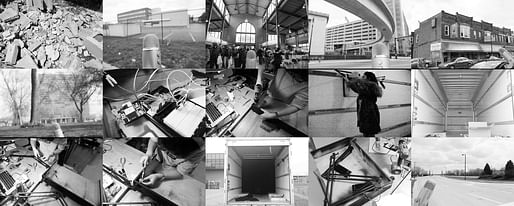
Through a focus on the sonic environment, this thesis expands the description, definition, and relocation of spatial territories. By recognizing a deep relationship between sound and the human perception of space, this work recognizes that sound can alter and deliver a sense of space through performative, flexible, heterogeneous and dramatic sensations that move across material and immaterial condition.

The sound that this thesis works with is the extra music (the ever-present array of sounds with which we all live) rather than music (composed carefully and intentionally for people to listen to). Every object and every movement is audible. Sound cannot exist without a source. Thus sound, although invisible, captures and transmits attributes of a space such as the present materiality, contained activities, and implications of its physical dimensions, as registered immediately and over time. Sound has influence on people physiologically, psychologically, cognitively and behaviorally. Although the ubiquity, immediacy and saturation make it difficult to perceive between sound especially extra music and to be aware of the shifts taking place, it is affecting our understanding, consciousness and actions in the everyday. Hence as a powerful agent for articulation space, sound can be used to read a space through conscious listening. With external and internal factors, people build their own private soundsphere shifting from the public one offering them new perception of the space.

The work captures and relocates audio records of the abandoned Detroit Central Train Station. Using the recording to capture the mechanical vibrations in the space on the site, reproducing the sound as electrically converted vibrations, setting it back into a new physical space, the site is reread and re-experienced through listening. By reproducing and transporting the sound into a movable independent space it creates an altered, though perceptible space and reality for people to experience. The audience can move through various sound-zones to discover new and individual sound combinations to negotiate where there immediate context, and the imported soundsphere of the Train Station.
Anastasia Kostrominova
Whither Ruins

Whither Ruins asks the disciplinary questions of how is meaning attached to architecture? And, does architecture continue to have value after the building is no longer inhabitable? The thesis tackles these poignant and timely issues by using the techniques of casting and video sited within the context of Detroit, a city struggling to retain its rich architectural legacy.

The video takes discussion about ruins outside of the academy and into the city. It documents the actual process of demolition at a Historic District Commission hearing and interviews the people involved in deciding the fate of Detroit’s historic architecture: a government employee, a preservationist and a Detroit resident, as a means to investigate the factors that have created an abundance of ruins in Detroit such as the capitalist economy, the financial difficulties of the city and the iconoclastic destruction of vacant buildings to erase the symbols of the City’s ailments.
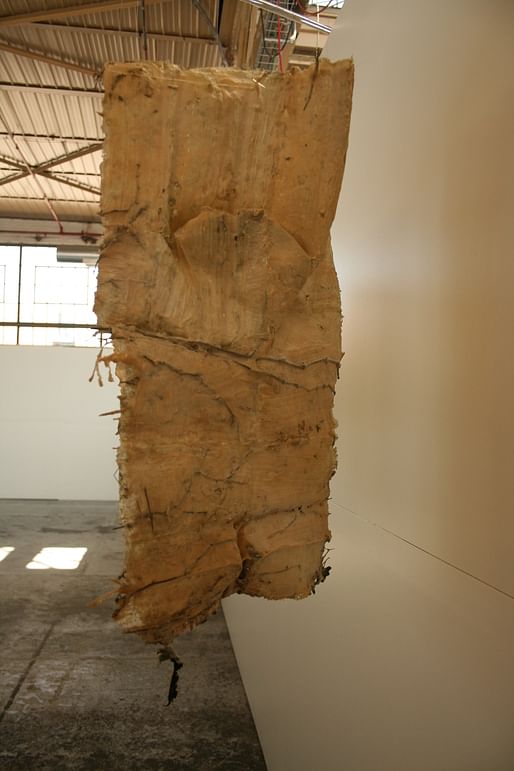
When a souvenir’s referent no longer exists, a small replica assumes a new and different meaning. Throughout the video the viewer encounters footage of the process of casting. Without being given any context, the viewer is unable to associate any meaning to the process beyond what is readily apparent. As the film progresses the viewer slowly learns that the casts are being taken from vacant historic buildings that are currently in danger of being demolished, or ones that are already gone. Without context, the standalone casts function as an objectified replica of a building, spotlighting materiality and tectonics. Contextualized, they become a symbol of the manifold of [often contradictory] meanings that are assigned to [historic] architecture. These casts propose alternate methods of preservation for a city that has limited resources.
The act of casting and the various meanings a cast takes on has broader applications within the discipline by showing what happens when a design leaves its conceptual existence within the studio-based realm of representation and becomes a politicalized object within the real world. It provokes both architects and the public to question what meanings a building can take to after it is built, and after it ceases to satisfy the function of shelter.
Anthony Killian
Controlled Burn
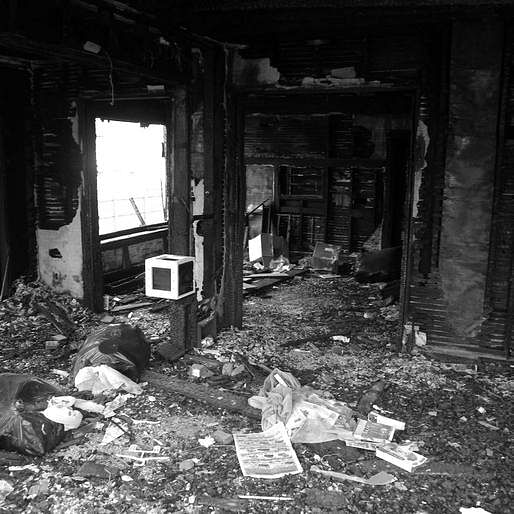
The built environment of Detroit is constantly in a state of change from the persistent condition of arson within the city. The root of the issue has many causes; including dynamic shifts in social issues that plague the city to the lack of protection to prevent such acts from happening. Every day, there are upward of 15 fires that exceed the capacities of the fire department. There are parts of the city that have no fire protection at all, exposing the city to a catastrophic disaster of disappearing. These arsons climax in an event that has been called Devil’s Night where the quantities of arson skyrocket. At the current pace of fires within the city, the current vacant structures in the city could be ash within 50 years.
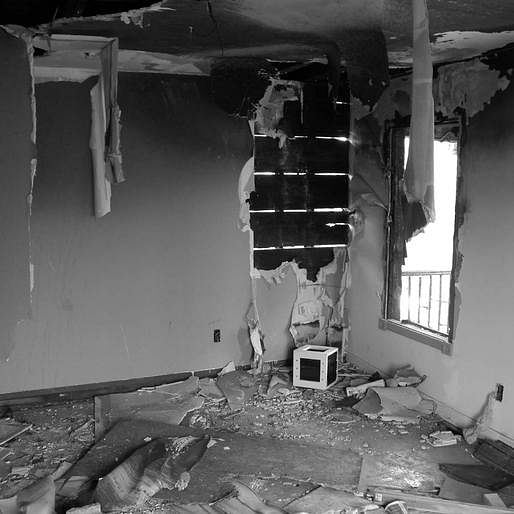
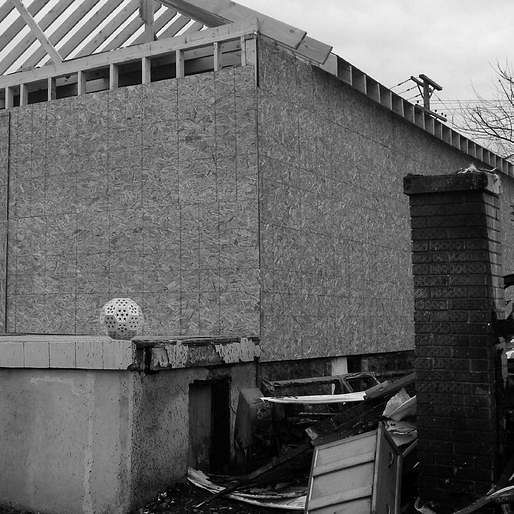
The work is explored through a series of capsules that aim to expose the materialistic realities of the present conditions within the city by critiquing the laws and decisions that have made governing burning and arson in Detroit. These policies, which indirectly assign specific values to the materiality of the city, have led to the current de-densification of Detroit. By materially exposing these conditions it one; creates a visual reminder of the persistent threat of fire and two it allows a response to the personal valuation of the role of fire in the city. It simultaneously amplifies the realities of the current trajectory of the materiality condition they are a part of. They also want to materially index the reshaping of the city by the decisions made by the city government. When inserted into a space, the immaterial values of the space become materialized. The function of the materials of the capsule is altered and relationships are juxtaposed to creating a new purpose for the materials. How the space is used and cared for by the city and citizens impacts the value of the space. The threat of fire emanating from the capsule is the ultimate reality of the perceived value and how the capsule interacts with the space it is contained within.
I am a graduate student and an entrepreneur at the University of Michigan Taubman College where my studies are focused on leveraging design ideas across multiple scales and platforms. Meeting at the intersection between design, tectonics and fabrication, I am continually exploring how a design idea can navigate complex material and production systems and evolve into fully realized architectural artifacts.
No Comments
Block this user
Are you sure you want to block this user and hide all related comments throughout the site?
Archinect
This is your first comment on Archinect. Your comment will be visible once approved.